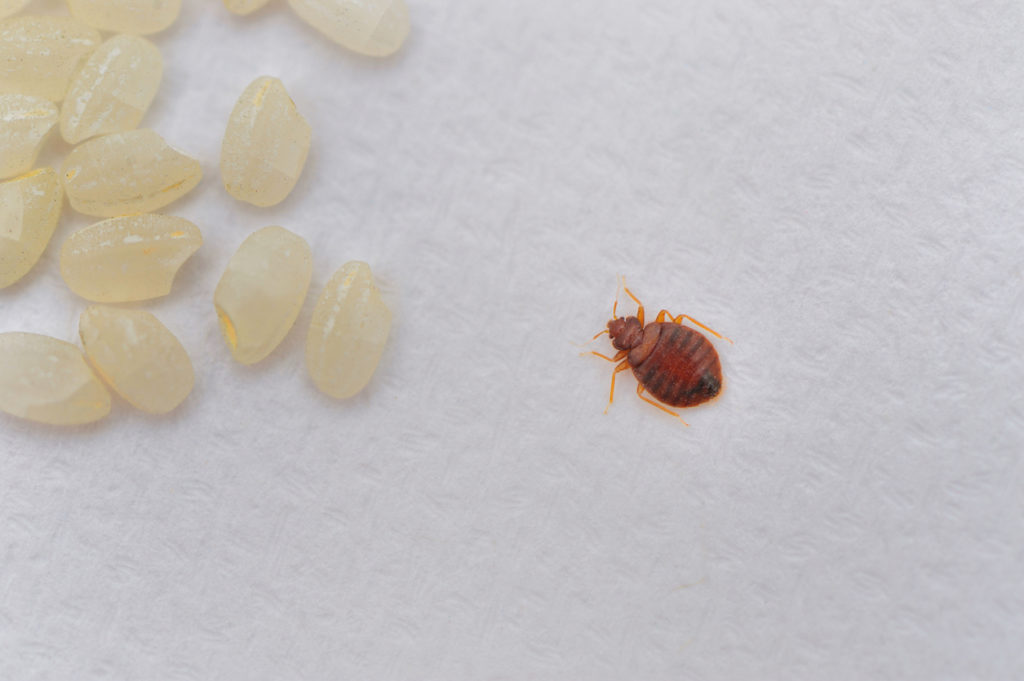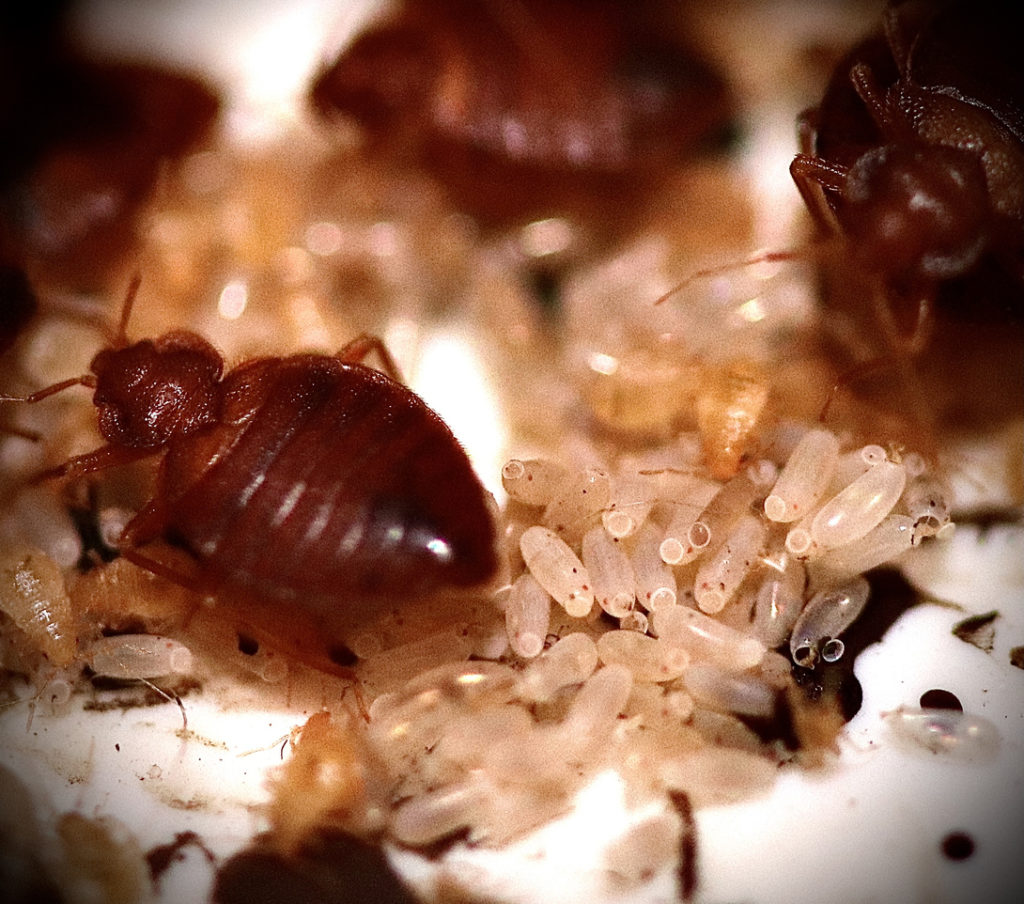Bed bugs are small insects that feed on the blood of people or animals. Our lives can become misery when these insects invade our homes. Bed bug bites can sometimes cause infections and allergies. They are confused with allergic diseases because they cause itching. President of the Allergy and Asthma Association, pediatric allergist Prof. Dr. Ahmet Akçay provided very detailed information about bed bug allergies.
You might also be interested in this article: Bed bugs: That smell in your room can be a warning sign of an infestation
What is a bed bug?
Bed bugs are small insects that feed on the blood of people or animals. They can live in your bedding, furniture, carpets, clothing, and other items. They are most active at night, biting people in their sleep and feeding on blood.
Bed bugs can be 1 to 7 millimeters long. They are flat, oval and reddish brown. Since they have no wings, they rely on animals or people to carry them from one place to another.
Although bed bug bites are rarely dangerous, they can be very itchy. In some cases, they cause infections or allergic reactions at the bite sites.
If you suspect that bed bugs are living in your home, it is important to eliminate them.
What do bed bug bites look like?
In some people, bed bug bites do not develop any symptoms. When symptoms develop, bites include:
- Red and swollen, each bite has a dark spot in the center
- Arranged in rows or clusters, several bites grouped together
- It itches
Bed bugs can bite any part of your body. However, they usually bite areas of skin that are exposed during sleep, such as the face, neck, arms, and hands. In some cases, bites can result in fluid-filled blisters.
Symptoms of a bed bug bite
If a bed bug bites your skin, you won’t feel it immediately because the bugs secrete a very small amount of anesthetic before feeding on humans. It can sometimes take several days for symptoms of a bed bug bite to appear.
Bed bug bites often cause significant redness and swelling. Multiple bites may occur in a line or in a group on a small area of your body. Bites tend to itch. They can cause a burning sensation.
If bed bugs live in your home, they may not feed every night. In fact, they can go several days without food. It may take several weeks to realize that the bites are part of a larger pattern.
Insect bites can cause bleeding or infection of the bitten area.
Bed bug bites on baby

If you suspect your baby or child has been bitten by bedbugs, check nearby bedding, mattress, bed frame, and baseboards for signs of bedbugs.
To treat bed bug bites on your baby or child, wash the bites with soap and water. Consider applying a cold compress or calamine lotion.
Talk to your child’s doctor or pharmacist before using topical steroid creams or oral antihistamines to treat bites. Some medications may not be safe for babies or young children.
If your child is old enough to understand your instructions, ask them not to scratch their morsels. It may also help to trim your child’s nails and cover the bites with a bandage to prevent bleeding from scratching.
How do you distinguish between bedbug bites and flea bites?
Bed bug bites and fleas look very similar on the outside. Both can cause red bumps to form on the skin. Both can be very itchy.
When fleas bite you, they typically bite the lower half of your body or the warm, moist areas around the joints. places where fleas bite;
- Feet
- Legs
- armpits
- The inside of your elbows or knees
Bed bugs are more likely to bite the upper parts of the body, such as:
If you suspect you have been bitten by bed bugs or fleas, check your home for signs of pests. Bed bugs often hide in the seams of mattresses, in the cracks of bed frames and headboards, and in the baseboards around beds.Fleas typically live on pets and carpets or upholstered furniture.
If you find bed bugs or fleas, it is important to treat your home or pet to get rid of them.
Risks of bed bug bites

Bed bugs can live in any home or public area. However, it often occurs in places where there are a lot of people. Your risk of getting bed bugs may be increased if you live or work in any of the following areas:
- hotel
- hospital
- homeless shelter
- Military barracks
- Student dormitory
- Apartment complex
- Business office
Unlike some insect species, bed bugs do not transmit disease when they bite. However, in some cases, bed bug bites can cause an infection. Possible signs and symptoms of infection include:
- Pain and tenderness from the bite
- Redness, swelling, or warmth around the bite
- Red lines or spots near the bite
- Pus or discharge from the bite
- Skin sensitization
- Fire
- shake
Sometimes those who are allergic to bed bugs can also experience an allergic reaction after being bitten. This can cause painful swelling or severe itching around the bite site. In some cases, it can also trigger a potentially life-threatening reaction called anaphylaxis.
If you suspect you have had an infection or an allergic reaction to a bedbug bite, contact your doctor. Get medical help immediately if you experience any of the following symptoms after a bite:
- nausea
- Vomit
- Fire
- shake
- dizziness
- Difficulty breathing
How do I get rid of bed bug bites?
If you suspect you have bed bugs in your home, check your bed and other areas. Areas where it is usually kept:
- mattresses
- bed springs
- Bed frame, seams
- title
- Pillows and bed linen
- Furniture cracks or seams
- Carpets around baseboards
- Gaps behind light switches and outlet plates
- curtains
- laundry
You can see the insects for yourself. You may also find insect droppings in the form of drops of blood or small black dots on your mattress. If you find bed bugs, call your landlord or a pest control company.
To control and eliminate the infestation, the following helps:
- Vacuum and steam clean your floors, bedding, furniture, and appliances.
- Wash your bedding, linens, and clothing using the hottest settings on your washer and dryer.
- Seal non-washable items in plastic bags and store at temperatures of -17°C for a few days or several months.
- Heat items that can be safely heated to 46°C.
- Fill gaps around your baseboards and cracks in furniture.
Various insecticides are also available to kill bed bugs. A pest control company may have access to pesticides or equipment that you may have difficulty purchasing, renting, or using.
Treating bed bug bites
In most cases, bed bug bites heal within one to two weeks. To relieve symptoms, it may be helpful to:
see also

- Apply an anti-itch cream or calamine lotion to the bites.
- Oral antihistamines to relieve itching and burning.
- You can use painkillers to relieve swelling and pain.
In rare cases, bed bug bites can cause allergic reactions.
Sometimes bed bug bites can cause an infection called cellulitis. To reduce the risk of infection, wash the bites with soap and water and try not to scratch.
How to treat with home remedies?
In addition to over-the-counter medications, there are a variety of home remedies that can help relieve the symptoms of bed bug bites.
It may help to do one or more of the following to soothe the bitten areas:
- an ice pack wrapped in a cold cloth or towel
- a thin paste based on baking soda and water
- some types of essential oils
Although more research is needed, some research suggests that camphor oil, chamomile oil, or certain other types of essential oils may help provide relief from insect bites.
How do I get rid of bed bugs?
Bed bugs are only 5 millimeters wide. These insects are intelligent, robust and reproduce quickly. Bed bugs know where to hide to avoid detection. They can survive for several months between meals and a healthy female can lay up to 500 eggs during her lifetime.
It’s no surprise that these tiny bloodsuckers can cause major damage to your home. When they get into bed with you, they can leave red, itchy patches all over your body.
Fortunately, you can get rid of bed bugs. Be patient because removing bed bugs usually takes some time and effort. If you have a particularly large infestation, you may need to try different chemical and non-chemical approaches.
Some factors can make bed bug removal difficult. If you have a lot of clutter or travel frequently and bring new bed bugs with you, you may have a harder time ridding your home of them.
If you cannot rid your home of them yourself, you may need to call a professional pest control company.
Finally
-Bugs are small insects that feed on the blood of people or animals.
-Bed bugs are particularly active at night
-They are confused with allergic diseases because they cause itching.
-The diagnosis can be made based on the appearance of the bite and the discovery of bedbugs.
-The house must be cleared of infestation by pest control companies
– Itching creams and painkillers can be used during treatment.
What causes lace bugs? How to remove?